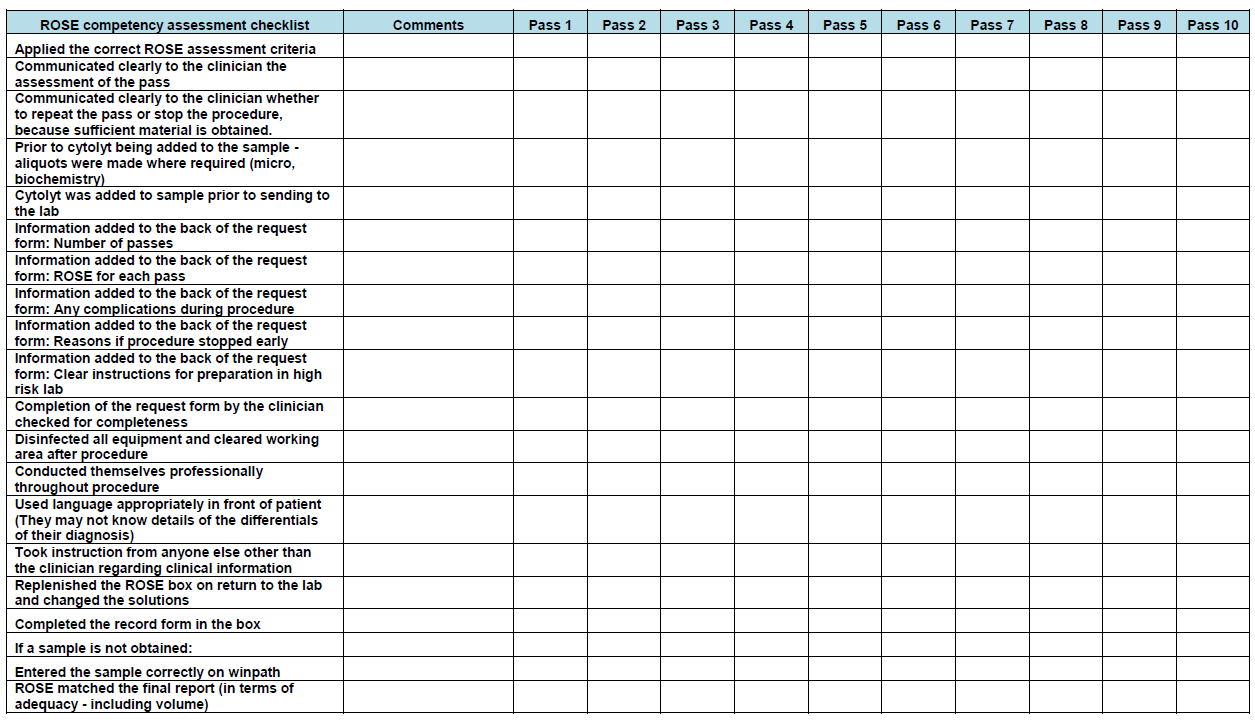An effective training plan is vital in ROSE. The individual needs to obtain the skills to feel confident in their decision making and remain calm in a pressured environment. Selection of staff with the right aptitude is crucial.
A comprehensive training programme should include the following:
Laboratory training:
Multi header microscope sessions to include:
- Diagnostic interpretation—lesional sampling, benign conditions and malignant entities
- Diagnostic pitfalls
- How to review the slide efficiently
- Speed review sessions—to get the individual used to rapid assessment
- Review of the cases from the previous week
Overview of the anatomy and pathogenesis in target tissues
Sessions covering conduct at clinic: (Refer to conduct at clinic section)
- Terminology
- Awareness that you are the one in the room that has the most expertise in the area that you are working, you need to the sample collection to be optimal to make your preparation and assessment efficient i.e. not too much blood, contaminant sampling, advise to change from necrotic areas.
- Limitations of practice
- Communications with clinical team
- Building relationships, and trust and confidence from the clinical team
Multi-disciplinary team attendance
Understanding the impact of ROSE
Practical sessions in the laboratory – making direct spread preparations
Training in the clinical setting:
Time in clinic is the best form of training and there really isn’t any substitute. But this can cause anxiety to trainees. It’s advisable to start with making preparations only, alongside an experienced individual and move onto the full ROSE SSA supervised by an experienced individual.
Once the individual becomes more confident it is important to review their progress using an assessment template (see below). Ensure that the individual receives feedback about their strengths and weaknesses.
Stress the importance of clear communication.
Engage the clinician with the trainee.
Caption here




